
Mantua was added late to the WH list, only in 2008. At that time, reading the particularly weak AB evaluation, I was wondering if it was worthy enough. The combination with Sabbioneta seemed difficult to explain, and there was no clear reason given why it would distinguish itself from other Italian Renaissance cities. Only recently I started to become more interested in Art History, even just finished a course on it as part of my General Cultural Sciences studies. Mantua popped up there quite prominently. It even got 2 entries among the 101 masterworks of European art and architecture. So I became very interested in visiting.
The town is a bit far from everywhere, and it took me 2 hours to get there on a local train from Ferrara. From the train station, it is a walk of another 15 minutes or so to the heart of the city, through quite unimpressive streets. My first goal was the Sant’Andrea basilica, one of the 2 “masterpieces”. Its dome can be seen from afar, but finding the entrance is a lot more difficult. The façade of this 15th-century church is dwarfed by the neighbouring tower and shopping arcades. Leon Battista Alberti designed this church using the triumphal arch motif in both the interior and the façade. Inside I was surprised by how big it is. Unfortunately, the nave is currently totally hidden under scaffoldings. At the back though, restorations of the dome and transept have been finished, showing the same triumphal …
Keep reading 0 comments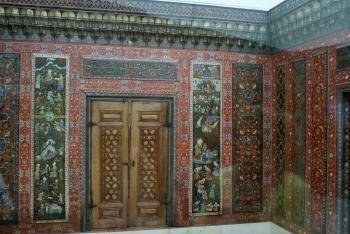
The best known and most impressive of the five museums is undoubtedly the Pergamon Museum. It is primarily known for the examples of ancient architecture such as the Pergamon Altar, the Ishtar Gate from Babylon, the Market Gate of Miletus and the Mshatta Facade. The enthusiasm for these highlights in the previous reviews is absolutely justified. But there is much more to see. I was very impressed by the collection of Islamic art (e.g. the Aleppo Room, photo). Even if you only take a look at the highlights of the museum, you can easily spend half a day there.
In October 2009, the reconstruction of the Neues Museum (by David Chipperfield) was completed and now, for the first time since WWII, all five museums are open for the public. Neues Museum shows the famous Nefertiti bust, but I was even more enthusiastic with the renovated museum. The building was severely damaged during the WWII and Chipperfield rebuilt it in its original shape. The original remains were preserved and irretrievably lost parts were replaced by modern elements. So the devastation of the war remains visible. If you have more time, you should also visit the Bode Museum, at least the cupola hall is well worth seeing.
Between Bode and Pergamom Museum, the Museum Island is crossed by a railway viaduct. Many visitors wonder about that. If one would plan such a railway track today, they would surely get in trouble with the Unesco. But the track was already built in 1875 …
Keep reading 0 comments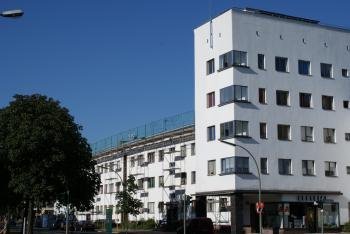
I can imagine that for some people it is difficult to understand why these housing estates are a WHS. Certainly many visitors think: What is so special here? That looks just like my neighborhood. But as Ian Cade wrote in his review: this should be taken as evidence for the success and impact of this architecture.
The housing estates are spread widely over Berlin, but I managed to visit them all in one day. But I had to start early in the morning and I spent much time in S-Bahn trains and stations. All estates have in common that they are very well maintained. Fortunately, the significance of the estates was already recognized in the 1960s and 70s and the buildings have been restored, in West Berlin as well as in the former GDR.
The modern concept of social housing differed significantly from the traditional tenement blocks. The building blocks were open at the edges, there were many green areas and courtyards. The apartments had a high standard with bathrooms and private kitchens and many of them have balconies. The estates are different in their style and appearance. The Hufeisensiedlung Britz is probably the most exceptional of the six estates because of its central structure in form of a horseshoe. Falkenberg is a suburban estate with terraced houses and gardens, striking are the bright colors of the houses. The other estates are rather urban residential areas. Schillerpark was the first modern urban estate in Berlin, with its red brick facade …
Keep reading 0 comments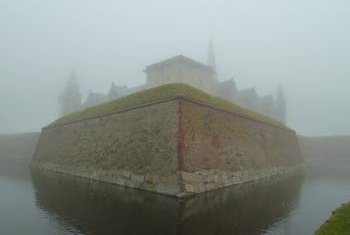
New Year’s eve and New Year’s day are always awkward times to visit world heritage sites, and for the third year in a row I found myself locked out of a chilly northern European WHS. I know that it will be like this, and I have actually started to enjoy these half visits.
2011/12 led me to Kronborg castle, walking over its ramparts and spying its impressive interior across its moats and through a rather romantic blanket of fog.
Obviously I can’t claim to have seen the best of the site, or offer a full review, but it was actually very enjoyable to be locked out of this impressive fortress, and certainly feel I can count it as a visit, having done a lap and ducked into any open facility in order to warm up.
The castle is located at the tip of the little town of Helsingør. I would assume on days with better viability you could see Sweden, just across the narrow stretch of water. This slender channel was the reason for the castle’s creation, as it was essentially a very early and fearsome toll both, collecting taxes on good shipped to and from the Baltic. It is good to see the role of taxes and duties still plays a strong role in the economic life of the city, as the centre is full of shops selling alcohol to Swedes who made the short hop on the ferry. It does make you think though about cost of living …
Keep reading 0 commentsI write in the capacity of an ex-student ; I was there from 1967 to 1970 - the best four years of my life. I can proudly say that,as with thousands of us, whatever I am today is because of the education I gained at Oak Grove which will soon celebrate 125 years of existence.
It is a school that has carried some of the best traditions and even as an elite boarding school, entry was never restricted by reason of caste / creed /religion / status. Students have invariably emerged as good citizens and have done India proud, both within and outside the country.
Oak Grove, spread over three hillocks, including a glorious green valley, deserves World Heritage status in order to ensure that apart from its physical format, its intrinsic character is maintained for times to come.
Keep reading 0 comments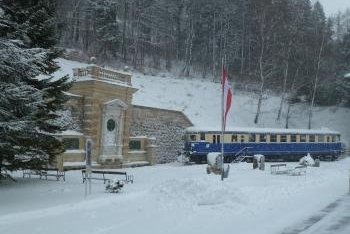
It is not that often that traveling between one World Heritage site and another will mean you visit a third. However if you catch a train between Vienna and Graz, the Semmering railway does exactly that.
I left Vienna in glorious winter sunshine, but about an hour out the clouds started to look a little more ominous. When I entered the WHS section at Glognitz, there were the first few flakes of snow. As the train pulled onwards the snow became thicker, the scenery more remarkable, the bends more regular, the drop at the side of the track even larger and the feats of engineering more impressive.
We stopped briefly at Semmering station where I was able to get off for a jog along the platform to take a picture and have a quick chat with the conductor. He didn't view me with as much amusement as I thought he would, so perhaps there are a fair few people who appreciate that they are travelling over a World Heritage Site and like to take pictures of it, or maybe he was just humouring me. Either way it was nice to be able to get off and see how deep the snow had become, before shuffling back to my cabin to warm up and enjoy watching the snow gradually abating by the time we got down to the end of the WHS at Mürzzuschlag.
The bright clear skies had returned by the time we rolled into Graz, leaving a rather magical …
Keep reading 0 comments
The day we arrived in Cartagena (Nov. 2010) it was pouring rain. The streets were flooded, traffic was backed up and it was hard to get around. Nevertheless, it was nice to be there during the rainstorm because we saw a unique side of the city. When it rains, the water comes off of the fort in large, cascading waterfalls. Whether that was by design or merely water finding any open outlet, it created a unique and interesting view. The local children gathered under these waterfalls to play and bathe. The old town area wasn't flooded and we spent some time exploring that area, too. The rain also meant that not as many tourists were there and that there were fewer street vendors competing for our attention (although several enterprising ones were selling umbrellas).
Keep reading 0 comments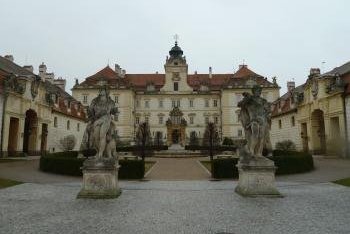
This site had been a thorn in my side for a few years. 3 previous attempts to visit were abandoned, and it sat there taunting me for not 'completing' all the WHS in the Czech Republic. However a trip between Olomouc and Vienna in early 2012 provided me with a great opportunity to finally 'tick it off'.
My first stop was Valtice, a rather pleasant small town with a monumental palace. Most of the things in the city centre and in the castle grounds were closed this early in the year. This fortunately spared me a tour around the palace interior. I've seen enough Central European dancing parlours, tapestries and chandeliers to last several lifetimes, so I was exceptionally happy to find a locked door to the ticket hall (it may just have been a little stiff to open, but I really didn't want to have a look around).
Instead I headed down into the cellars of the palace that now provide a home to the Czech national wine institute. And I had a lovely time walking around looking at and sampling the massive selection of wines and exploring a different part of the castle’s architecture. The surrounding landscape is actually the centre of the Czech wine industry, and whilst it is not as well developed as many other wine regions in Europe it does produce some great quality affordable wines. My recommendation would be to try some of the locally produced Veltlínské zelené (aka Grüner Veltliner) or if …
Keep reading 0 comments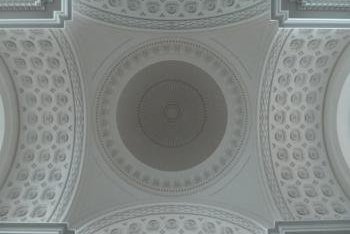
Having seen a lot of cathedrals in the process of visiting World Heritage Sites, it takes something a little different to linger in my memory. Roskilde certainly does that. As Els points out it is a Protestant cathedral, and this means that it has a slightly austere brick and whitewash interior. This was actually very impressive and helped to focus attention on the other artistic details, and I guess for parishioners there it helps them focus on their worship. I really enjoyed studying the intense detail of the carved altar piece and choir stalls, which were elegantly lit and open to allow close inspection.
The main thing that impressed me though was the side chapels with the tombs of Danish royalty. This was a big surprise to me as this type of monument normally leaves me indifferent. They were very elegant, and the use of space within the chapels was very restrained. At no stage was I overwhelmed by what I was seeing, this allowed my focus to remain on the works of art. This may not be the most impressive looking cathedral interior on the list, but actually that is its main advantage.
I almost missed seeing the interior, but I am very glad that I made time for the short hop out from Copenhagen to get inside. The exterior of the cathedral is nice but not particularly remarkable, but the real highlight is the restrained yet outstanding interior.
Roskilde is a little different to the other European Cathedrals …
Keep reading 0 comments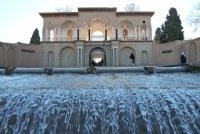
All over Iran you can find beautiful gardens. Nine of them are inscribed on the list and I visited six of them.
To fully appreciate it, you should visit the gardens not in wintertime, which unfortunately I did. Most of the fountains in the gardens won't have water in it and the trees are mostly without leaves and there will barely be any flowers.
I did enjoy them nonetheless.
I first visited Bagh-e Eram in Shiraz. There was no water in the canals but the turquoise pond in front of the beautiful Eram palace and the surrounding palm trees from the Canary Islands were lovely.
Another one is in Pasargadae (a UNESCO site inside a UNESCO site). Since Pasargadae is an archaeological site, there is little left over from the garden. The only thing left from the garden is the outline of the watering canals.
The Bagh-e Shahzadeh (picture) in Mahan has a really nice long split-level fountain (fortunately there was water flowing, although I heard that a few weeks before my visit it was completely dry).
Only half of the Bagh-e Dolat Abad in the desert city of Yazd is open to the public, but it's still nice to visit, mostly because of the pavilion with the stain glass windows and the largest wind tower of the city (when you stand underneath it you can really feel the wind).
The Bagh-e Chehel Sotun in Esfahan has the palace I liked the most. It has amazing frescoes on the inside …
Keep reading 0 comments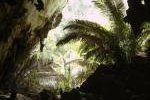
For the country that tourism industry developed so well, it was quite surprised to discover that visiting Huai Kha Khaeng and Thung Yai were still almost unknown by tourist standard in Thailand even with the UNESCO World Heritage Site logo guaranteed. In 2009 with my friend, we traveled from Malaysia to Northern Thailand with stop enroute at the peaceful town of Uthaithani. We managed to hire local van to bring us to beautiful town of Lan Sak where the Huai Kha Khaeng's forest ranger HQ located.
At the office we pay 200 Thai Baht as the entry fee, here there were many trekking routes to see the forest to choose, the forest was OK with some bird, but there was no significant attraction. A ranger recommended us to visit Cyber Falls (very unusual name!) and Hoop Pa Taad Valley, so we continued our trip to the waterfall which located in other part of the Huai Kha Kheang about 40 minute drive from the HQ office, after 2 kms trekking and river crossing from the entrance, we reached the waterfall, the waterfall was quite lovely but nothing grand or spectacular, but compared to the trekking route at forest ranger HQ, the latter one was far better.
Then we went to Hoop Pa Taad Valley, not part of Huai Kha Khaeng but the adjacent buffer zone, but for us was the real highlight, the valley was located in the middle of limestone mount, we need to walk through the …
Keep reading 0 comments
The Camaguey nomination file has the length of a Fidel Castro average speech. Every ice cream parlour is named. This is not helped by an El Cheapo translation into English of the file. Why this has become a WHS is a mystery, and it remained that way after I had visited the place.
It’s not an unfriendly city though. It probably has more “normal” city life than the average Cuban town: a large shopping street, terraces on the main square. Lots of churches too. It is definitely pleasant to walk around for an hour or two, exploring the many little and larger squares. But that’s about it.
The nomination draws heavily on Camagüeys Andalucian touches, but you’ll need a lot of imagination to see this parallel. The large clay jars I only saw deliberately placed on the town’s tourist trail: in the former convent/museum and next to the main church.
Keep reading 0 comments
Cienfuegos is the most elegant and prosperous Cuban city that I visited on my trip. Especially its Punta Gorda neighbourhood – palm trees everywhere, wide streets, comfortable-looking houses, a marina. It could be Florida. A very pleasant place to wander about. I also used the city buses, which by western standards are so incredibly cheap that I even wasn’t able to change money so small. My casa owner ended up just giving me some coins. A ride costs 20 centavos in Moneda Nacional, that’s about 0,007 EUR.
The WHS area comprises the historic centre, and then mainly the Parque José Marti, the central square. It has monumental buildings on all sides. These include the iconic City Hall (former Governal Palace and now home to the regional administration), which unfortunately you cannot enter. Next to it is the Provincial Museum, worth a look for its quirkiness but like most museums in Cuba not with a strong collection or presentation. There’s the cathedral, undergoing restorations at the moment and looking much like a construction site. The fine blue turret of the Palacio de Ferrer. The center of the square holds the obligate statues and the quite small Worker’s Arch (a triumphal arch) and a bandshell.
The best sight here undoubtedly is the Teatro Tomas Terry, located on the north side of the square. It opened in 1895. From the outside, it is just one of those big neoclassical buildings that Cienfuegos has in abundance. Its interior is so lovely however. …
Keep reading 0 comments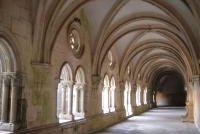
From the lonely train station, I took a taxi to revisit the famous Monastery of Santa Maria of Alcobaça which located almost in the middle of the small town of the same name, Alcobaça. After got information on connecting bus to Batalha from the very friendly tourist information and nice hot chocolate from the lovely café on the monastery square, I was ready to explore the huge monastery again. The first thing I admired was the monastery’s façade and entrance; its perfect proportion with the rest of the complex was really well designed and its lovely sculptures were really supporting the overall ensemble. For interior, at first, I was quite disappointed to the really plainness of the church, but the magnificent tombs of Petro I and his wife, Ines de Castro and their tragic love story colorfully filled the church with romantic theme.
Other highlights were the cloister, the refectory and the monastery kitchen, the cloister was really large with many lovely decorations especially from the second floor, and the fountain hall was one of the best sights of the monastery. The refectory, in my opinion, maybe the most elaborated room of the monastery with many beautiful window channels, and lovely pulpit. The monastery kitchen was quite unique with the really big chimney liked industrial factory. For other parts of the monastery were quite simple with really plain design with some glazed tiles decorated, a very typical Portuguese interior. The tour route inside the monastery was quite well organized and …
Keep reading 0 commentsEls Slots
Trinidad and the Valley de los Ingenios
Trinidad and the Valley de los Ingenios (Inscribed)

Trinidad is one of Cuba's most iconic destinations. It attracts hordes of tourists into its small, well-preserved city center. If you stay overnight, and it is valuable to do so because of the various things to see in the surrounding area, you'll enjoy its old-fashioned tranquillity in the early mornings. Dogs going for a walk on their own, street sellers roaming the streets with milk, bread, or cheese, the soft ticking of horse hoofs.
The town has a couple of picturesque sights. The large yellow bell tower for example. It can clearly be seen, like the rest of the small colourful houses, from the roof of the museum. The day I was there, a kind of ash cloud blowing in from the countryside covered the city. While eating my breakfast on the casa's patio, tiny strips of black ash started to cover everything. A common occurrence here, so I heard.
At inscription, Unesco cast doubts over safeguarding the industrial architecture that remains from the sugar period. I went to see for myself and used the tourist steam train to get into the so-called Valley of the Sugar mills. Most remarkable: there's almost no sugarcane left! The landscape is quite pretty, but not what I had expected. Scattered in the valley some industrial heritage still exists. The main site is the former Slave Tower at Iznaga. You can still climb up to the very top, and look out 360 degrees like they did to watch the slaves. I cannot …
Keep reading 0 comments
Havana wasn't really what I had expected. The included area spans only the Habana Vieja quarter and the fortresses. On my first morning in the city, I walked and walked, thinking "where is it going to start?". I finally arrived at the much restored Plaza Vieja. Most of the streets in the core of Habana Vieja have been renovated as well. I had anticipated a bustling atmosphere, but these are just a couple of brushed-up Spanish colonial houses. White, camera-toting tourists I met in abundance.
The full name of the WHS is "Old Havana and its Fortifications", and it was these Fortifications that I came to truly enjoy. The best two are on the other side of the harbour: Morro and Cabana. It's a nice and quiet area to walk in, and the views of the city are spectacular. Morro has an interesting exhibition about the travels of Columbus, and models of other fortifications around Cuba. There even is a good restaurant (12 Apostles). All around the harbour and coast smaller and bigger forts were built during various centuries, and you can still see them.
Inspired by the recent Connection "Equestrian Statues", I was attracted to a huge statue of a man on a horse that can be seen from the fortresses on the other side. This one, of Maximo Gomez (a general during the Ten Years' War and the War of Independence), probably is the most majestic one that I have ever seen. It was sculpted by …
Keep reading 0 comments
In hindsight, this was the area of Cuba that I liked best. Especially its natural surroundings. Surely I had seen a karst landscape or two before, and the size of this is no match for China's Yangshuo/Guilin, but "diving" into this valley by road is a spectacular sight. Its little hills, tobacco plants and colourful flowers do add an extra touch to the standard Cuban landscape of banana plants and royal palms.
Another thing that sets Vinales apart is that it is such a small town, just pottering around a bit far from the rest of the action of Cuba. It's a totally relaxed place. The town's inhabitants seem to have completely surrendered themselves to tourism. About 80% of the houses are in use as Casas Particulares. The rest sell drinks, food, or souvenirs. Large touring cars travel on and off through the town's main street, delivering more tourists (including day-trippers from Havana or even the beach resorts).
To see the valley's main sights, I joined a bike tour. Although the valley is only 12km long, I found it quite a tough ride. Cuban-made mountain bikes aren't the most comfortable in the world. And those nasty mogotes! Annoying little hills always involve a steep climb. On the way back we also had the wind against us. So I am not ashamed to say that I walked a fair bit of the last 5 km.
Part of the tour was the obligatory visit to a tobacco farm. I …
Keep reading 0 comments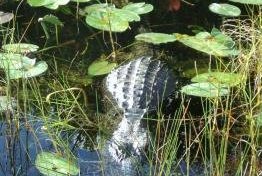
As I had plenty of time in Southern Florida in December 2011, I made three excursions into Everglades National Park. First I visited Shark Valley and walked more than half the loop, though a bike ride might be the better option as the loop is around 15 miles! Here we enjoyed the scenery of the Shark River Slough which seemingly never ends. The vast "wet prarie" is beautiful to behold. At Shark Valley we saw dozens of alligators, turtles, numerous bird species, and various types of fish.
My second excursion into the park is really a nice place for families. Chekika is a small hammock that is the closest entry point to Miami. The area is small and recieves very few visitors, partly because it only re-opened in 2008. Furthermore, Chekika is only open December 1st - April 30th due to seasonal flooding. The Chekika area was originally a private park in the 70's, but was purchased and added to the national park in 1991. The site offers a pleasant picnic area that includes pavilions and grills. Some of the ruins from the old small park can still be seen. Entering Chekika, you walk around a small pond where alligators are sometimes seen. Further on there is a small (little used) trail that goes into the dense hammock. Chekika has some interesting history as well, being a major site of resistance from the Seminole Native Americans. I did not see too much wildlife here, various birds, and one Alligator.
Lastly, …
Keep reading 0 comments
Iam responsible for this area. it is very important area in the presence of 13 order of 28 order of vertebrate fossils. it has a fossils of the ancestors of primates, elephants, hyrax, rats, bats and so on. beside the natural heritage site, it has the ancient paved road all over the world as a cultural site and some ruins of pharoans and Roman periods, there are a fantastic landscapes of varigated cloroured rocks, we need fund to protect this area.
I built asmall check point without any funding exept doonars
but we need furnature, workers salaries, sign posts and so on to protect this site.
Iam so sad becouse this area is ignores untill now and there is arodomely tourist tips and many factors gamage this
very important herritage site all over the world
if some body or authority ready to help in protecting this area
please call me on 02201004535453- mmm_517@yahoo.com
Keep reading 0 comments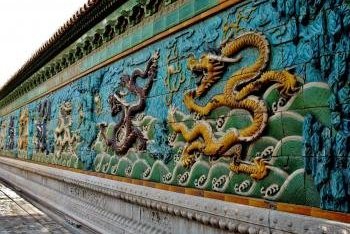
I visited the Imperial Palace in Beijing twice. Once in 2006 and once in 2007. A true exploration of the site runs about half a day. It is worthwile to explore the side sections of the palace. Each side passage or courtyard reveals something new and is quite interesting to search in depth. Moreover, large restored sections of the palace are being opened every couple years. Suprisingly, vast sections of the palace are still closed and are scheduled to be revealed to the public in the not too distant future. Try not to visit the palace in the summer or weekend if possible as it gets clogged with people (literally).
The tile panels are certainly a highlight, and side alleys have a more personal atmosphere that you don't find walking near or around the central axis. I prefer weekday mornings, if you are lucky with the smog, the pictures can be incredible.
Keep reading 0 comments